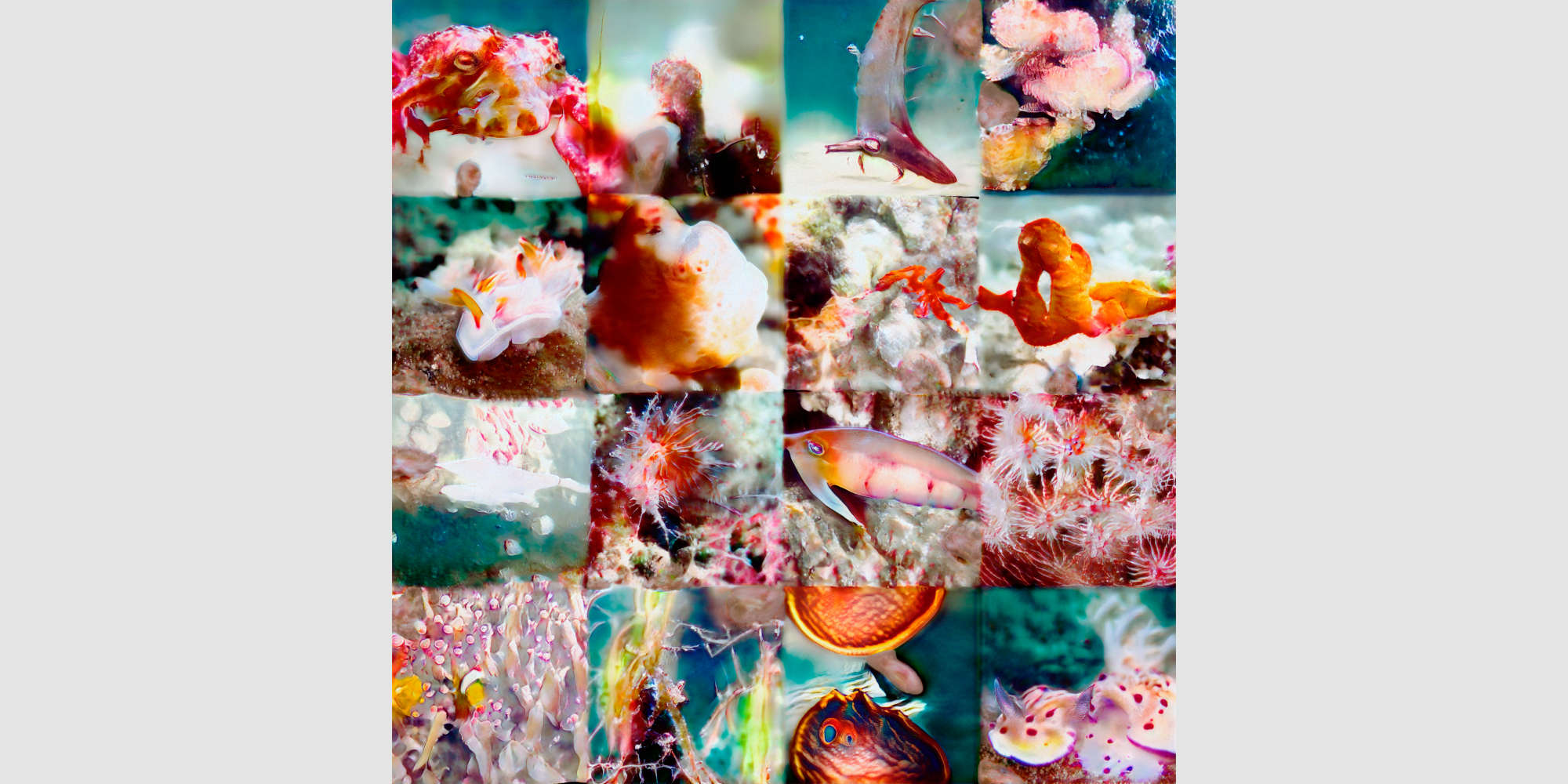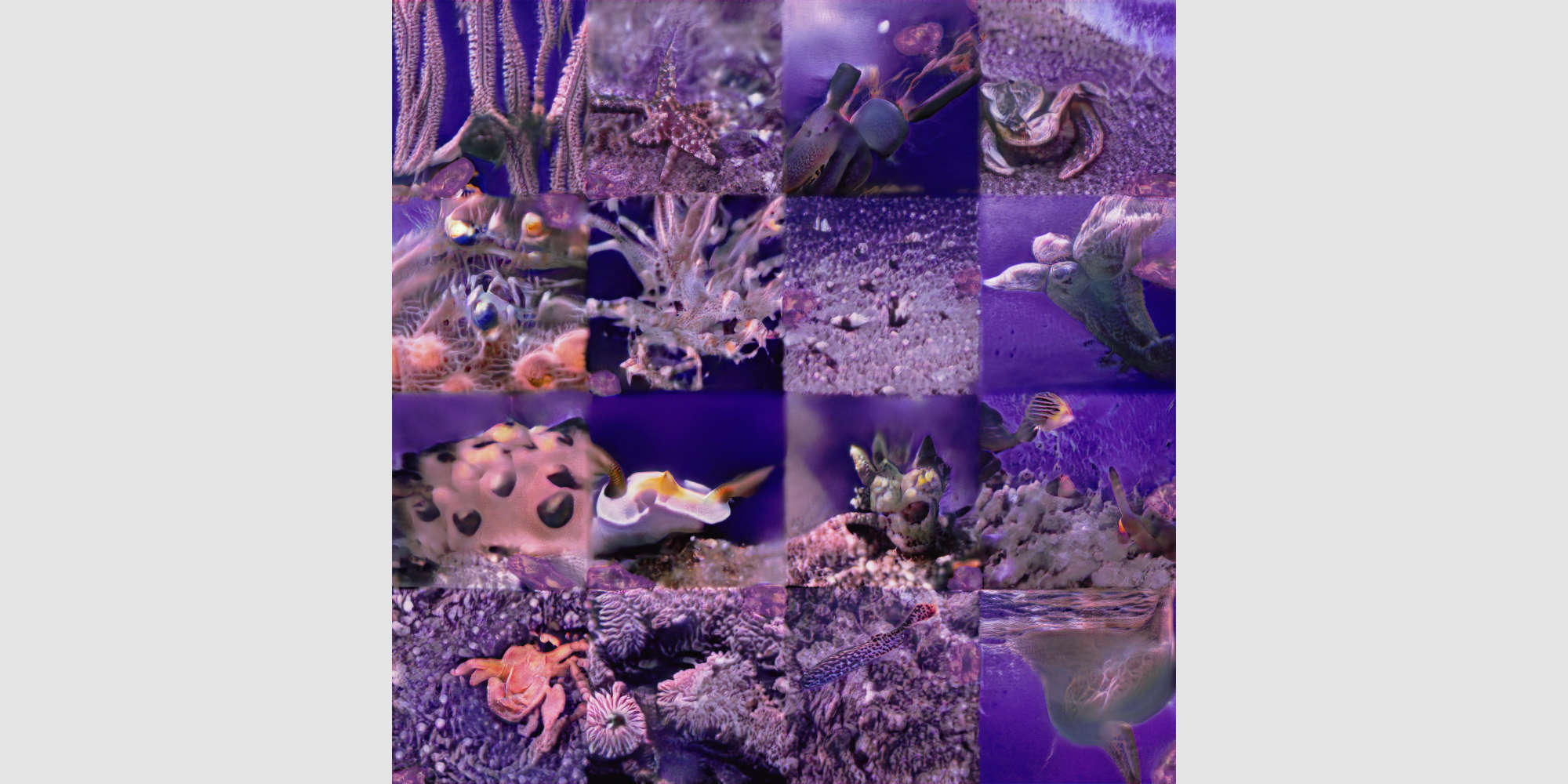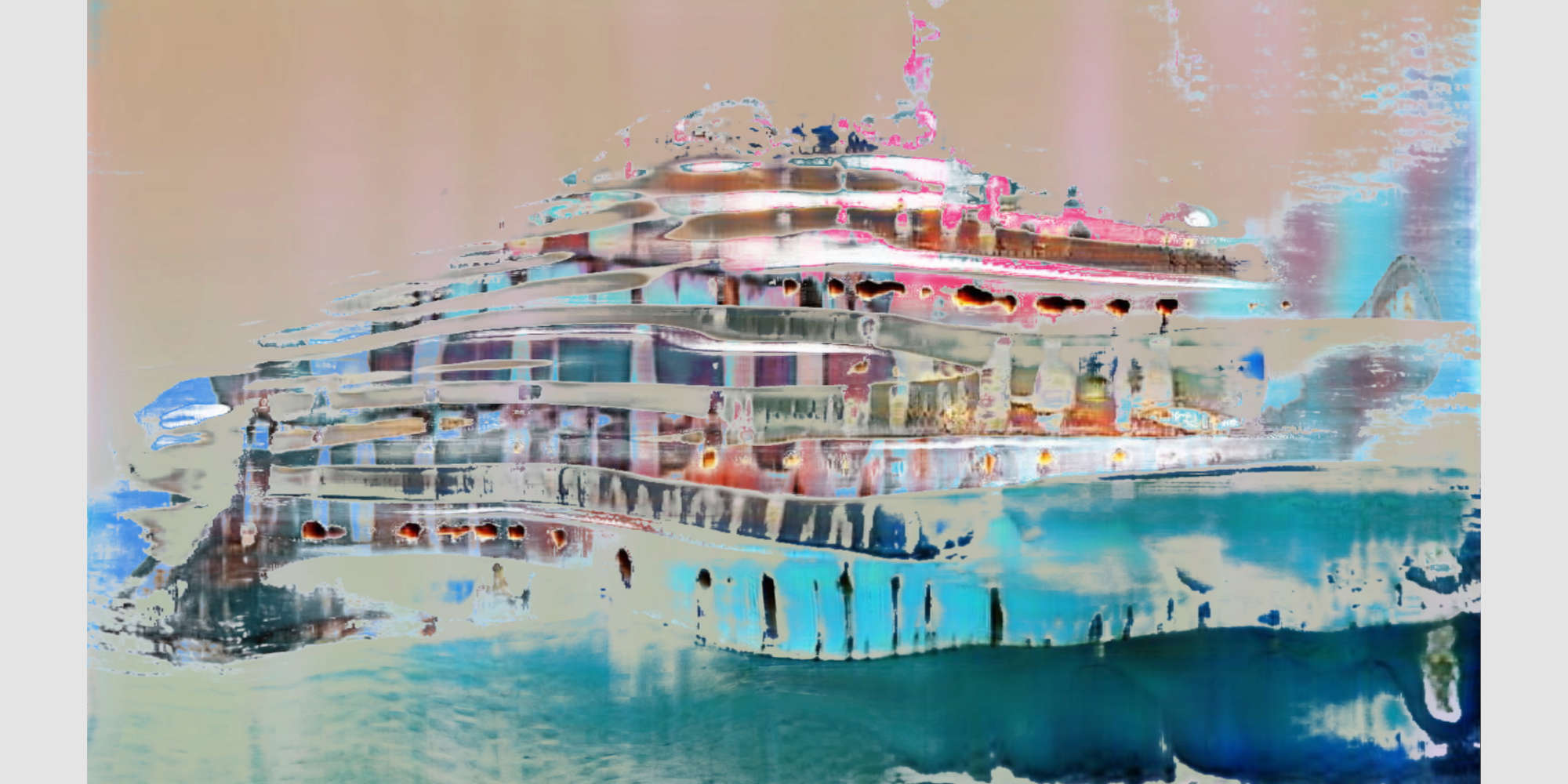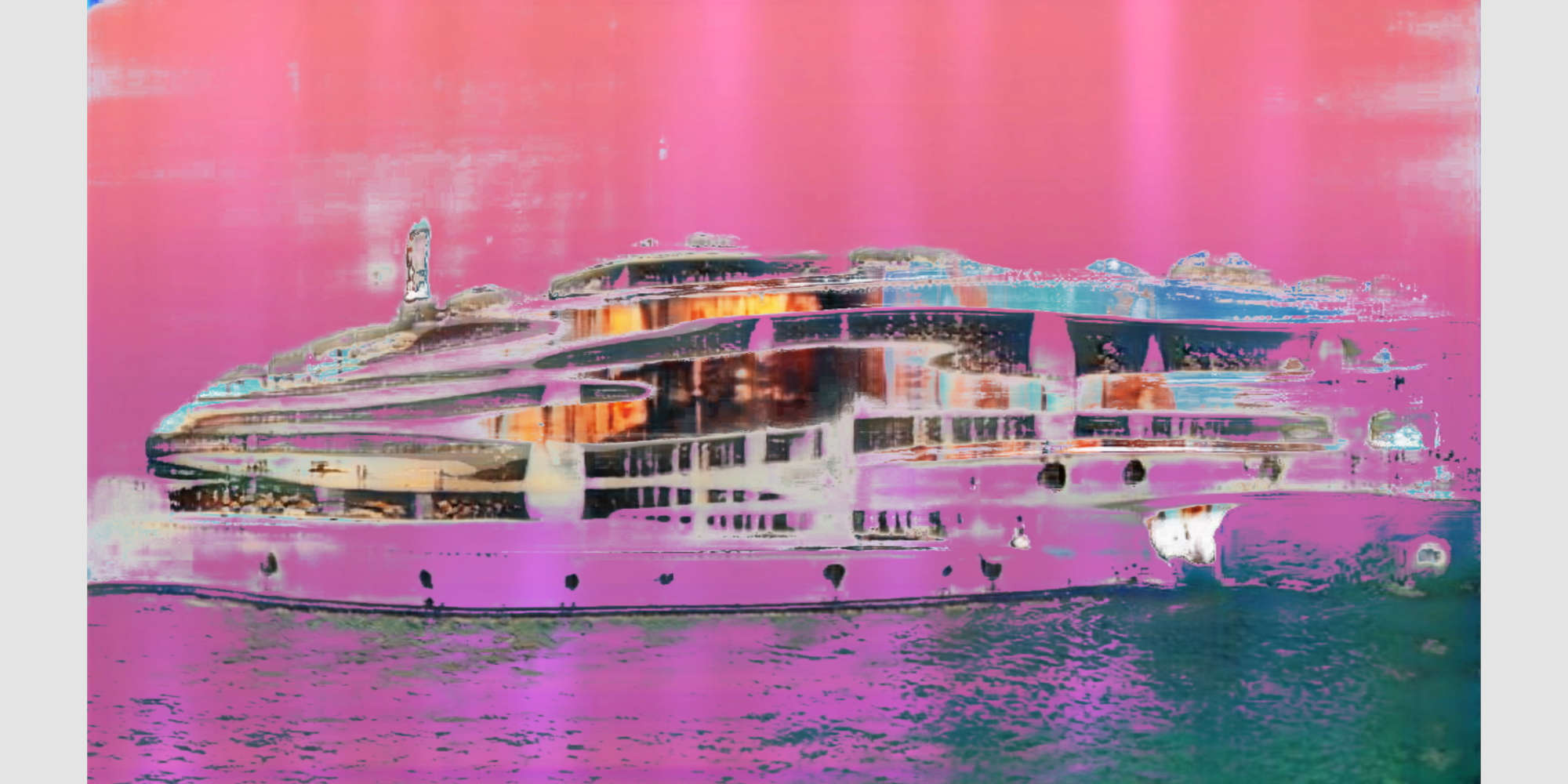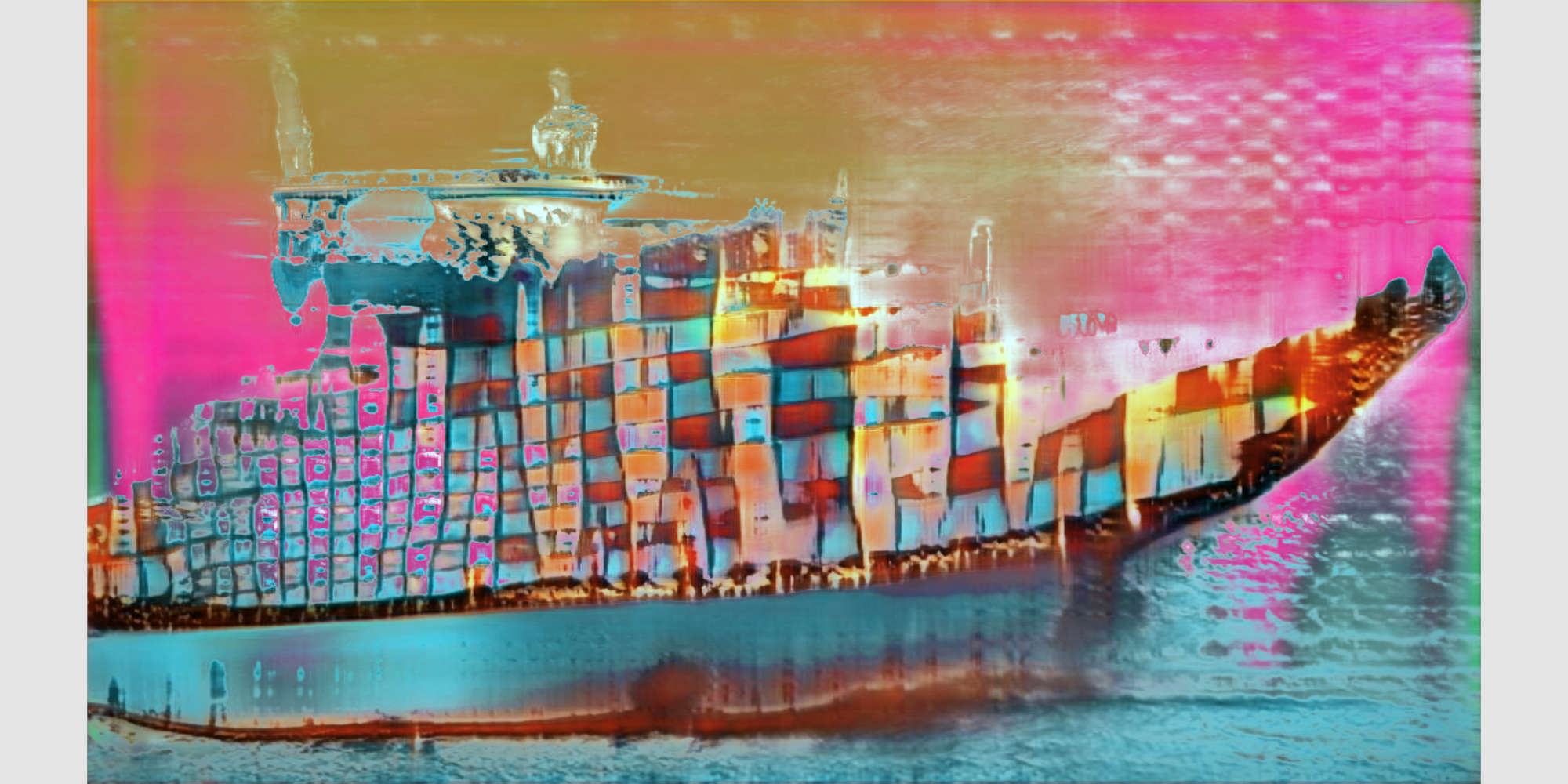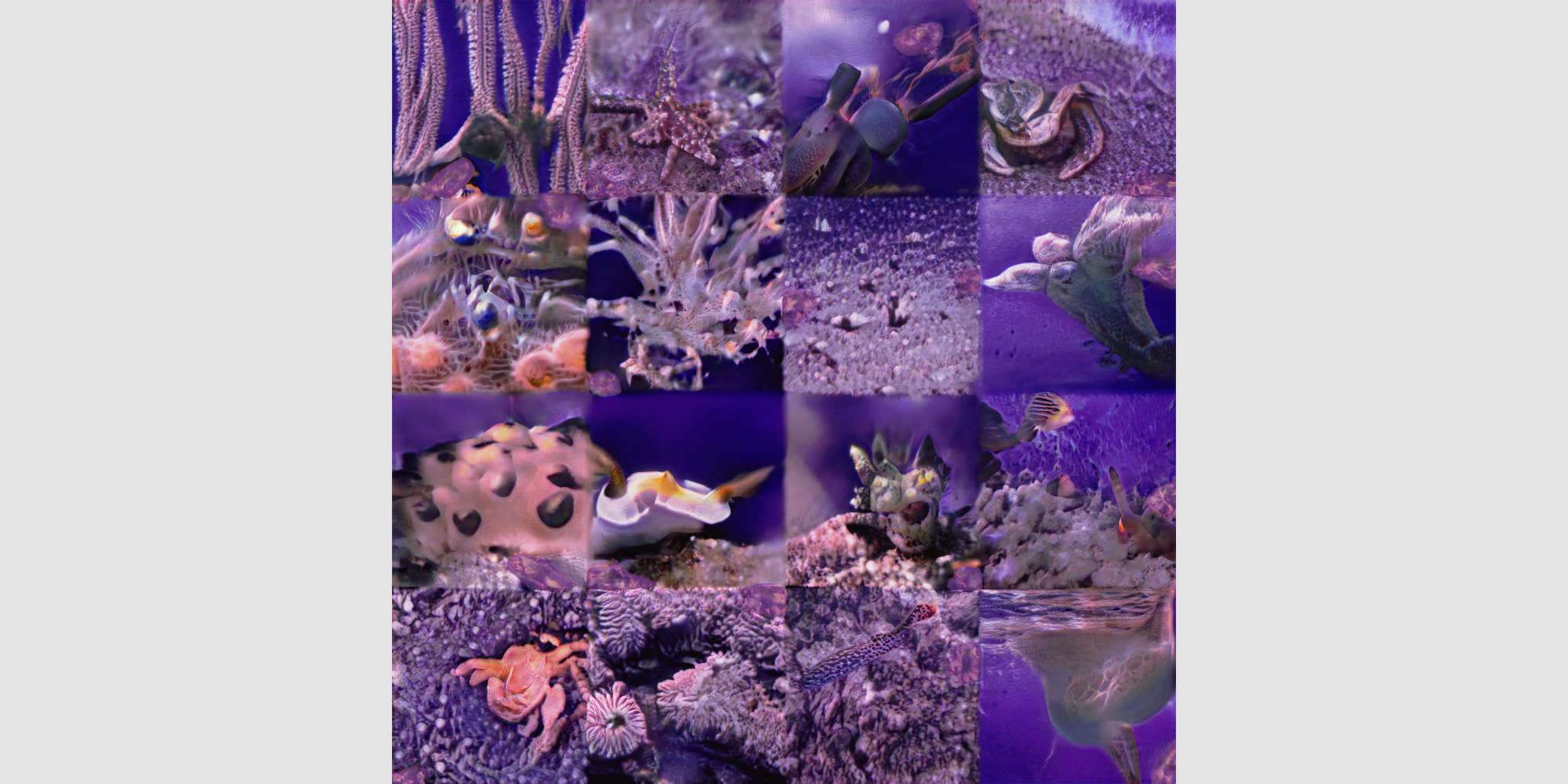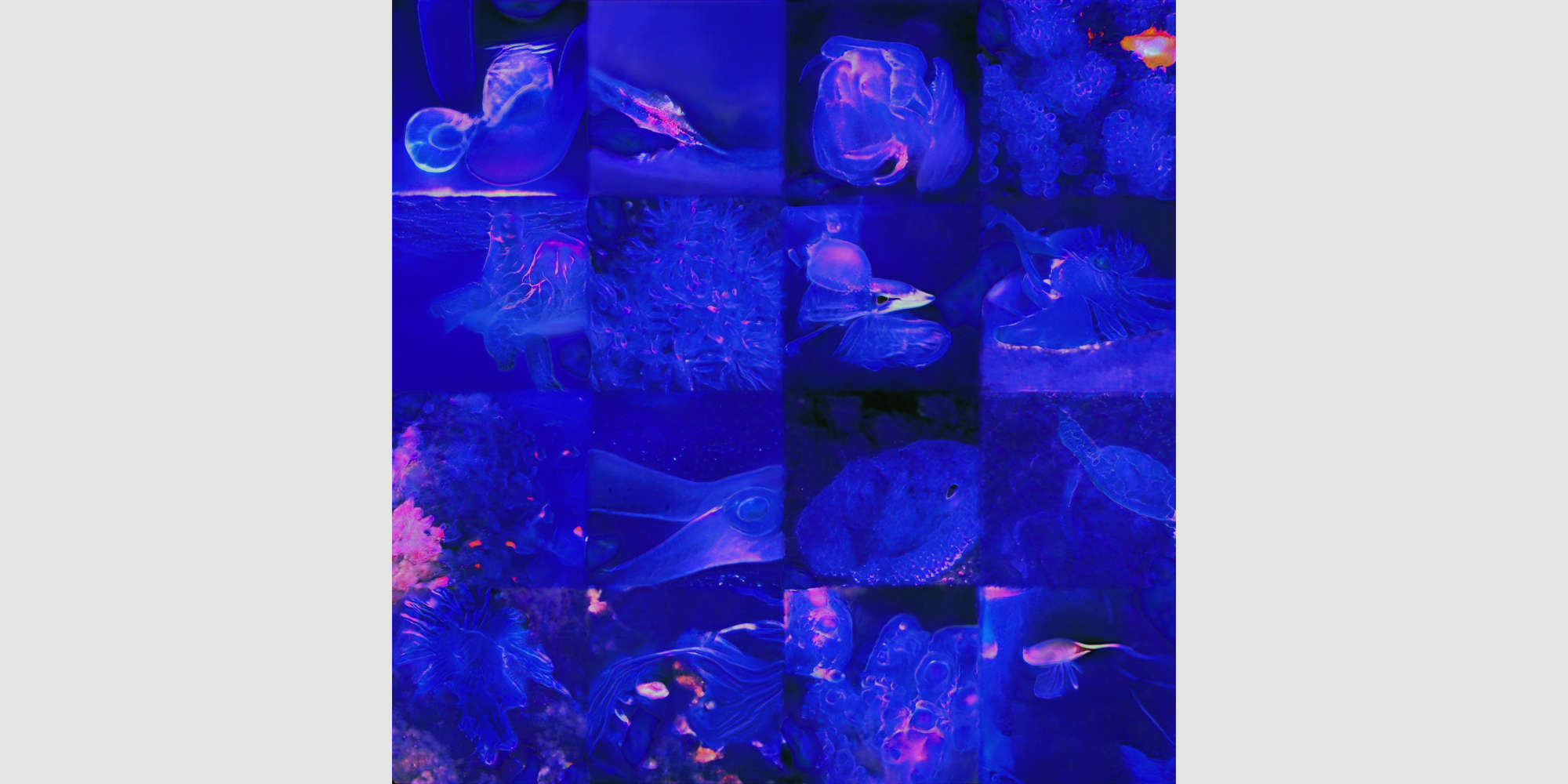Artificial Seascapes reflects on the impact humans and technology have on the environment and explores new ways to visualize it. By incorporating artificial intelligence, algorithmic tools and data processing into their practice, Spalter and Crespo allow us to see mundane events from the perspective of a machine. By shifting the focal point, scenes that are familiar to the human eye – cruise ship images or sea creatures – begin to evolve, resulting in new compositions that have never been seen.
The artists invite the viewers to submerge in these new worlds, where beauty and technology collide to expose questions of human perspective, consciousness and preservation.
Anne Spalter
Lost at Sea: AI Ships in the Time of Quarantine
Anne Spalter uses AI image creation as the basis for new compositions. On this occasion, she creates imagery and video about ships trapped at sea during quarantine. The images combine ghostly, ever-morphing forms and the ships seem to move while going nowhere. Theoretically, the work draws on philosophies of Carl Jung and Arthur Schopenhauer for the exploration of artificial intelligence (AI) in image generation.
“I am interested in the concept of representation as discussed by Schopenhauer (e.g., “objects are representations”) in the context of generating this seascape imagery with various AI GAN processes. In particular, how do these objects exist distinctly from perception by a subject (i.e., when only “seen” by a machine)? And how does this “perception,” when divorced from human senses, result in an “understanding” of an object or landscape/seascape? During the AI algorithm’s “learning” process, it often develops shapes and compositions that do not resemble anything exactly familiar or that we have seen before.”
Sofia Crespo
Neural Zoo
Neural Zoo is an exploration of the ways creativity works: the recombination of known elements into novel ones. These images resemble nature, but an imagined nature that has been rearranged. Our visual cortex recognizes the textures, but the brain is simultaneously aware that those elements don’t belong to any arrangement of reality that it has access to. Computer vision and machine learning could offer a bridge between us and a speculative “natures” that can only be accessed through high levels of parallel computation.
Starting from the level of our known reality, we could ultimately be digitizing cognitive processes and utilizing them to feed new inputs into the biological world, which feeds back into a cycle. Routines in an artificial neural network become responsible for authorship and the human artist (with non-artificial neurons) acts as the muse. Implying this change of roles in authorship further confronts us with the question: Can art be reduced to the remapping of data absorbed through sensory processes?
What does Neural Zoo say about creativity?
Interview: https://nextnature.net/2020/02/interview-sofia-crespo
Initially, the fact that Neural Networks themselves are abstractly inspired by the functioning of the visual cortex led me to think about the flow of information in the creative process, i.e. the way as a child I developed a phobia of jellyfish, which eventually became a fascination for the visual elements of the jellyfish and finally the focus of an artwork. I wondered if there’s a ‘dataset’ of human experiences in our brains, that we constantly filter through and rearrange, and that ‘rearranging’ of the elements into novel ones is what we refer to as creativity. No matter how hard I try, I can’t imagine a color that I haven’t previously seen, but I can imagine combinations of the ones I have seen, similarly, a neural network can’t create something out of the blue from a dataset that hasn’t been fed to it but it can recombine elements from data that has been given to it.
Sofia Crespo
Anne Spalter
Project Credits / Acknowledgements
Sofia Crespo (DE), Anne Spalter (US)
Curated by CADAF
Biographies
Anne Spalter
Digital mixed-media artist Anne Spalter is an academic pioneer who founded the original digital fine arts programs at Brown University and The Rhode Island School of Design (RISD) in the 1990s. With a decades-long goal of integrating art and technology, Spalter has authored over a dozen academic papers and the seminal, internationally taught textbook, The Computer in the Visual Arts (Addison-Wesley, 1999). Alongside her studio practice, Spalter continues to lecture on digital art practice and theory. She is on the Digital Art Acquisitions Committee of the Whitney Museum of American Art. More at https://cadaf.art/artists/anne-spalter
Sofia Crespos
Sofia Crespo is an artist working with a huge interest in biology-inspired technologies. One of her main focuses is the way organic life uses artificial mechanisms to simulate itself and evolve, this implying the idea that technologies are a biased product of the organic life that created them and not a completely separated object. On the side, she is also hugely concerned with the dynamic change in the role of the artists working with machine learning techniques.



